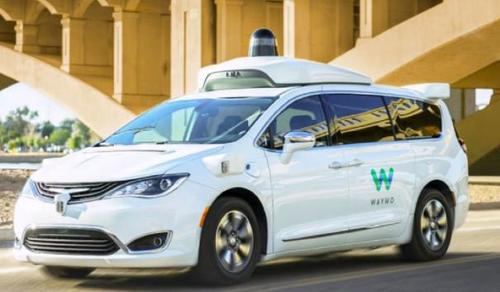Tesla Ditches Radar, Says Its Cars Will Now Use Camera-Based System For Autopilot
The damage control – literally and figuratively – continues at Tesla.
The company has now said it is going to do away with a radar sensor in favor of using a “camera-focused Autopilot system,” Reuters reported on Wednesday. The change is going to apply to both Model 3 and Model Y vehicles in North America, starting this month.
The move comes as scrutiny of both “Autopilot” and “Full Self Driving” – two features that clearly don’t live up to their name the way they are labeled – has intensified. Additionally, as CNBC noted, “radar sensors are relatively expensive” and this could be yet another cost for Tesla to try and cut.
“Pure vision Autopilot is now rolling out in North America,” Tesla CEO Elon Musk said on Twitter, referring to the change. Recall, Tesla had to quickly shelve its last Full Self Driving beta after numerous humiliating videos surfaced of the software having repeated issues and quickly went viral.
The Full Self Driving beta v8.2 was thrashed by critics like Road and Track who called it “laughably bad” and “potentially dangerous”.
“If you think we’re anywhere near fully autonomous cars, this video might convince you otherwise,” Road and Track wrote about Tesla’s Full Self Driving feature. The article referred to the feature as “morally dubious, technologically limited, and potentially dangerous”.
Tesla says some features could be disabled during the transition, according to Bloomberg. Musk had referred to radar sensors as “crutches” during the company’s latest earnings call, the report notes.
Tesla’s blog on its website said:
We are continuing the transition to Tesla Vision, our camera-based Autopilot system. Beginning with deliveries in May 2021, Model 3 and Model Y vehicles built for the North American market will no longer be equipped with radar. Instead, these will be the first Tesla vehicles to rely on camera vision and neural net processing to deliver Autopilot, Full-Self Driving and certain active safety features. Customers who ordered before May 2021 and are matched to a car with Tesla Vision will be notified of the change through their Tesla Accounts prior to delivery.
For a short period during this transition, cars with Tesla Vision may be delivered with some features temporarily limited or inactive, including:
- Autosteer will be limited to a maximum speed of 75 mph and a longer minimum following distance.
- Smart Summon (if equipped) and Emergency Lane Departure Avoidance may be disabled at delivery.
In the weeks ahead, we’ll start restoring these features via a series of over-the-air software updates. All other available Autopilot and Full Self-Driving features will be active at delivery, depending on order configuration.
Recall, earlier today we noted that Waymo had committed to stop using the term “self-driving” due to safety concerns.
The company said it was doing this “so as not to give drivers a false sense of security in the technology,” according to Chief Safety Officer Mauricio Pena, who wrote an op-ed for CNBC this week.
“At Waymo, where I’m Chief Safety Officer, ensuring that the public has an accurate perception of the technology is a top priority. We’re confident that autonomous driving technology has the potential to save lives—as demonstrated by study after study. But we also know that many people don’t fully understand how ADVs work, and that people fear what they don’t understand,” he wrote.
The op-ed continues:
“Several years ago, we launched a public education campaign aimed at demystifying the technology for the general public, because we’ve seen that the more people learn about it, the more eager they’ll be to embrace it. Through that work, we have witnessed how language shapes people’s perception, and how the words we use to describe technology will ultimately influence how people engage with and use it.”
And finally explains Waymo’s reasoning for replacing the term with “autonomous driving”:
“That’s true of working in any nascent industry, because you’re not just creating the foundational technology that future generations will build on, but you’re also introducing it to people for the first time. That is just as true for building ADVs here at Waymo as it was for me when I worked on innovative rocket launches and commercial space travel.
And it’s a big reason why we decided to drop the term “self-driving” from our lexicon earlier this year, and instead started using the term “autonomous driving,” exclusively. It’s not just a branding exercise, and it’s not just a hypothetical—it’s about limiting confusion to improve safety outcomes.”
“If someone is overly confident in a technology because they misinterpret the words used to describe it, they could unknowingly take risks that jeopardize their own safety and the safety of the people and cars around them,” the op-ed concludes.
Tyler Durden
Wed, 05/26/2021 – 13:07
via ZeroHedge News https://ift.tt/3wFuBGZ Tyler Durden

